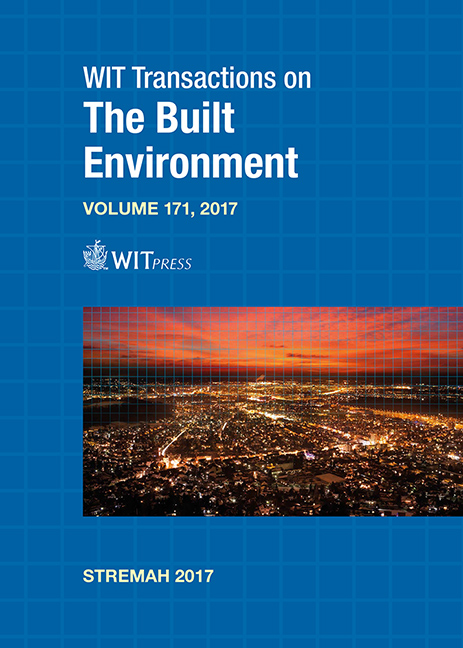MATERIALITY OF RURAL VERNACULAR HOUSING IN THE ANDEAN HIGHLANDS OF COLOMBIA: ENVIRONMENT AND BUILDING SYSTEMS
Price
Free (open access)
Transaction
Volume
171
Pages
11
Page Range
323 - 333
Published
2017
Paper DOI
10.2495/STR170281
Copyright
WIT Press
Author(s)
YARLEYS PULGARÍN OSORIO
Abstract
The material expression of rural vernacular housing in the Andean highlands of Colombia is the result of a combination of American native’s labour, materials and construction systems, and the techniques and spatiality of the European conquerors that arrived in the territory in the sixteenth century. Until today, from the indigenous population there still exist a few examples of wattle and daub, adobe walls and straw roofs, while from the Spaniards stems the adobe masonry and clay tile as the dominant expression, in which both building systems always appeal to the use of available raw materials (clay, wood and vegetable fibres). These architectural expressions remained unchanged until the end of the twentieth century when industrial materials were introduced, stimulated by the appearance of roadways that today reach what were once remote areas. Likewise, the dynamics of the market economy and national public sanitation policies led to the substitution of traditional construction systems and the progressive abandonment of these vernacular buildings. Thus, currently the total sample of the inhabited dwellings studied, in the rural area of six municipalities of the Andean Highlands of Colombia, have one or more volumes built with materials such as brick and asbestos-cement roof sheets. On the other hand, State housing programs and individual improving initiatives have contributed in some cases to preserve, consciously or unconsciously, the spatiality of ancient buildings. This has prevented the loss of some of its associated values, although, for this case study in particular, the low economic capacity of the rural homeowner and the above-mentioned State policies have had an impact on the choice of materials rather than the availability of raw materials found in the natural environment in which this housing is implanted, which is threatening the survival of old techniques.
Keywords
transculturation, raw materials, environment, building tradition, change




